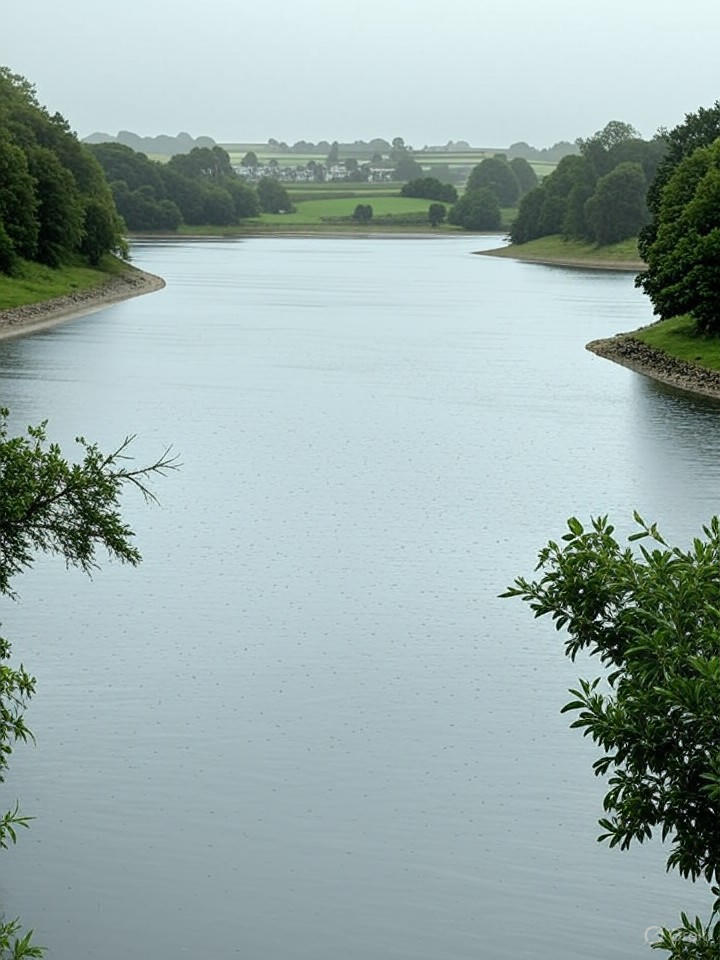England, a nation synonymous with relentless rain and foggy mornings, is grappling with an improbable crisis: it’s running out of water. Despite its famously damp climate, a confluence of factors including climate change, booming population, and decades of infrastructure neglect has pushed the country to the brink of severe shortages. Officials from the Environment Agency have declared the situation “nationally significant,” warning that without immediate action, parts of the country could face rationing as early as next year. This summer’s fourth heatwave has exacerbated the issue, following the driest six months since 1976, leaving reservoirs depleted and rivers running low.
The crisis isn’t just about weather; it’s a man-made debacle rooted in policy failures. Water supplies are strained across multiple regions, with five areas already in official drought status and six more teetering on the edge. Farmers are suffering, wildlife habitats are shrinking, and urban centers are under pressure. As The Guardian detailed in a recent interactive feature, the once-unthinkable prospect of England drying up stems from profligate water use, population growth, and the intensifying effects of global warming, which are making wet winters less reliable for replenishing aquifers.
Privatization’s Lingering Legacy and Infrastructure Gaps
At the heart of the problem lies England’s privatized water industry, which has prioritized profits over investment for decades. Since privatization in 1989, companies have extracted billions in dividends—£85 billion by some estimates—while failing to build new reservoirs or stem massive leaks that waste a trillion liters annually. Posts on X from users like economist Prem Sikka highlight this, noting that no major reservoirs have been constructed in 34 years, even as the population has swelled by nearly 12 million, largely due to immigration. This has created a supply-demand mismatch projected to reach a 5 billion liter shortfall by 2055.
Compounding the issue is the lack of desalination plants and inadequate maintenance. The Daily Mail reported that water firms have paid out £78 billion to shareholders since 1991, funds that could have modernized aging pipes. Thames Water, the largest utility, teeters on collapse, prompting the government to appoint advisers from FTI Consulting for contingency plans, as revealed by Reuters. The company’s potential special administration underscores the fragility of a system where foreign ownership dominates 72% of the industry.
Emerging Pressures from Tech and Climate Shifts
Modern demands are adding fuel to the fire. Data centers, essential for the digital economy, guzzle vast amounts of water for cooling servers, straining already low supplies in drought-hit areas. Business Standard noted this growing concern amid England’s water woes, with experts calling for stricter regulations on such facilities. Meanwhile, climate models predict more extreme weather, including prolonged dry spells that deplete chalk aquifers in the south, as upday News warned last week.
Population pressures further intensify the strain. Government minister Emma Hardy has flagged rapid growth from immigration as a key driver, potentially leading to shortages within a decade without new infrastructure. i reported in May that Britain risks repeating the 1976 “great drought,” when taps ran dry for millions, due to leaky pipes and no new storage.
Pathways to Solutions: Investment and Innovation
Solutions exist, but they require political will and hefty investment. The government is fast-tracking two new reservoirs, the first in decades, with plans to seize planning control to expedite them by 2040. Conservation efforts are ramping up, with the Environment Agency urging a one-third cut in water use, as echoed in historical warnings from The Scottish Farmer. Desalination plants, long overlooked, could provide a buffer, while fixing leaks might reclaim 19% of lost water.
Industry insiders advocate renationalization or stricter oversight to redirect dividends toward infrastructure. As Sustainable Times outlined, integrating tech like smart metering and rainwater harvesting could help. Yet, with heatwaves becoming the norm, England must act swiftly to avert a thirsty future, balancing growth with sustainability in a wet but increasingly parched isle.




 WebProNews is an iEntry Publication
WebProNews is an iEntry Publication